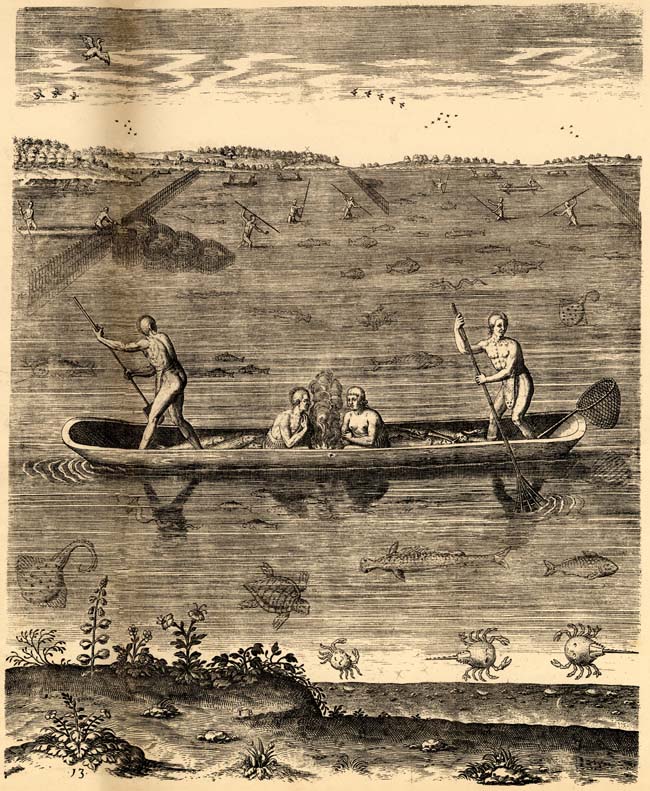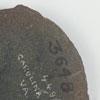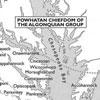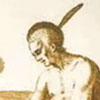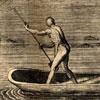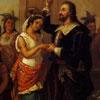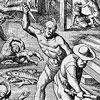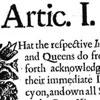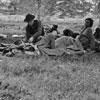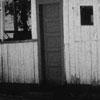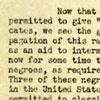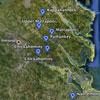We can learn a lot about both Virginia Indians and Europeans through primary sources such as this one. This print was made from an engraving by Theodore de Bry in 1590. He based these engravings on a series of watercolors by John White who spent time exploring the land of Roanoke Island (what is now northern North Carolina). As you examine this print, consider de Bry’s perspective. What might he have wanted to convey to his European audience?
When de Bry made his engravings, he made some significant changes to White’s originals. One of the things he changed was to add more wildlife and people working in the background, possibly to suggest to his European audience the bountiful resources in the “New World” in hopes of enticing investment or recruiting explorers.
Bearing in mind potential inaccuracies introduced by de Bry, the image can also tell us about Virginia Indian fishing technologies and techniques. We can see they had dugout canoes that were painstakingly fashioned from downed trees. It is also evident from the image that they used a variety of fishing technologies, including poles and weirs.
Fishing was just one of a variety of ways Virginia Indians interacted with, and managed, their environment. Hunting, fishing, farming, and gathering were all crucial to survival. These activities were challenged by European settlers and imported domesticated animals such as cows, pigs, and chickens that used hunting areas in different ways.
Source: Theodore de Bry, “Their Manner of Fishynge in Virginia,” copperplate engraving, in A Briefe and True Report of the New Found Land of Virginia, by Thomas Hariot, Electronic version (Original, 1590; English translation, 1871), (Chapel Hill: Documenting the American South, University Library, The University of North Carolina at Chapel Hill, 2003), 52, accessed September 17, 2011.


